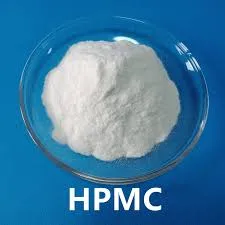
des. . 23, 2024 00:59 Back to list
Exploring the Role of HPMC in Pharmaceutical Excipients and Drug Formulation
The Role of HPMC Excipient in Pharmaceutical Applications
Hydroxypropyl Methylcellulose (HPMC) is a non-ionic, hydrophilic polymer widely used as an excipient in the pharmaceutical industry. It serves various functions, including a binder, thickener, emulsifier, and film-forming agent. Its unique properties make it an essential component in the formulation of both solid and liquid dosage forms.
Properties of HPMC
HPMC is derived from cellulose, a naturally occurring polymer, giving it a favorable safety profile. When used as an excipient, it exhibits several advantageous properties
1. Solubility and Swelling HPMC is soluble in cold water, becoming a viscous gel upon hydration. This solubility is beneficial for controlled-release formulations, allowing for a prolonged release of active pharmaceutical ingredients (APIs).
2. Viscosity Control The viscosity of HPMC can be easily manipulated by adjusting the concentration. This property is crucial in liquids where desired flow characteristics, stability, and uniformity are necessary.
3. Bioadhesion HPMC has excellent bioadhesive properties, enhancing drug delivery in mucosal applications, such as in ocular or nasal formulations.
4. Thermal Stability HPMC is stable across a wide range of temperatures, making it suitable for various manufacturing processes, including hot melt extrusion.
Applications of HPMC in Pharmaceuticals
hpmc excipient

1. Solid Dosage Forms In tablets and capsules, HPMC acts as a binder that enhances the mechanical strength of the dosage form. It ensures the uniform distribution of the API and facilitates the disintegration and dissolution processes. HPMC can also be utilized in the formulation of extended-release tablets. By controlling the polymer’s viscosity and concentration, formulators can design systems that release drugs over an extended period, providing more consistent therapeutic effects.
2. Liquid Formulations In liquid preparations, such as suspensions or emulsions, HPMC serves as a thickening agent. Its ability to maintain suitable viscosity helps stabilize these formulations, preventing sedimentation and ensuring that the active ingredients remain evenly distributed.
3. Microencapsulation HPMC is often employed in microencapsulation processes to protect sensitive APIs from degradation, mask unpleasant tastes, or control the release profile. The polymer forms a protective barrier around the drug, enhancing its stability and bioavailability.
4. Topical Applications In creams and gels, HPMC provides a desirable texture and enhances the spreadability of topical formulations. Its film-forming properties create a protective layer on the skin, improving the product's overall performance.
Safety and Regulatory Status
HPMC is recognized as a safe excipient with a long history of use in pharmaceuticals. Regulatory agencies such as the U.S. Food and Drug Administration (FDA) and the European Medicines Agency (EMA) classify HPMC as Generally Recognized As Safe (GRAS). Manufacturers can use HPMC in various applications without extensive safety concerns, making it an attractive choice for formulators.
Conclusion
The versatility of Hydroxypropyl Methylcellulose as an excipient has cemented its position as a fundamental ingredient in pharmaceutical formulations. Its unique properties, such as viscosity control, solubility, and bioadhesion, enable a range of applications from solid dosage forms to topical preparations. As the pharmaceutical industry continues to evolve, the role of HPMC is expected to grow, paving the way for innovative drug delivery systems that enhance therapeutic efficacy and patient compliance. As research progresses, the potential for HPMC to contribute to new formulation technologies remains significant, ensuring its place in future pharmaceutical developments.
-
Unlocking the Benefits of HPMC Products: A Gateway to Versatile Applications
NewsAug.07,2025
-
Unleashing the Potential of HPMC Ashland: A Comprehensive Look
NewsAug.07,2025
-
Tile Bonding Cellulose: The Key to Superior Adhesion and Durability
NewsAug.07,2025
-
Hydroxypropyl Methylcellulose Powder: The Versatile Component in Modern Pharmaceuticals
NewsAug.07,2025
-
Hydroxyethyl Cellulose: The Versatile Solution for Various Industries
NewsAug.07,2025
-
Hydroxyethyl Cellulose (HEC): The Versatile Polymer for Various Applications
NewsAug.07,2025







